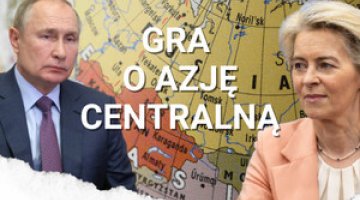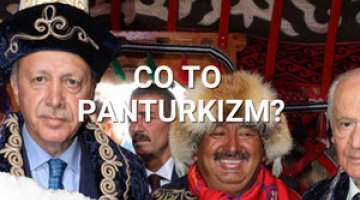Nervousness in Central Asia after the Taliban seize Kunduz
The successes of the Taliban and its allied forces in northern Afghanistan (the most spectacular of which was their capture of Kunduz for a few days) have caused nervous reactions in the Central Asian countries bordering Afghanistan, and several top-level meetings have been held where the situation in Afghanistan was discussed. The first concrete steps have also been taken: Russia has pledged to send a helicopter group to Tajikistan, while Turkmenistan is continuing the militarisation of its border with Afghanistan, and has made changes to its top security personnel.
The Afghan threat is being overestimated in the region; even if the Taliban achieve any significant successes, it seems unlikely that such instability will be transferred from Afghanistan to the Central Asian states, which have never been in the Taliban’s sphere of interest. Nevertheless, this factor does influence these countries’ policies, due to the post-Soviet Central Asian leaders’ fear of radical Islam. The involvement of Russia shows that Moscow will continue its regional policy of playing upon fear of the Afghan threat, and will try to exploit the Taliban’s successes to put pressure on the capitals of Central Asia, in order to increase its presence and influence there. This latter element is also taken into account by the countries in the region, especially Uzbekistan and Turkmenistan, which seek to conduct security policies independent of Moscow.
The fall of Kunduz
The situation in northern Afghanistan is becoming increasingly unstable; since 2009 this hitherto peaceful area of the country has seen activity by the forces of the Taliban and terrorist organisations allied with it, mainly the Islamic Movement of Uzbekistan (IMU) and the Islamic Jihad Union (IJU), which assemble the radical Islamists from Central Asia. These organisations have been crucial in spreading the influence of the Pashtun Taliban movement into the north of the country, which is inhabited by ethnic minorities: Tajiks, Uzbeks and Turkmens. After ISAF forces withdrew from Afghanistan at the end of 2014, Taliban forces took over successive areas in the provinces of Badakhshan, Kunduz and Jowzjan. The situation is further complicated by rivalry among the local leaders of the Afghan Tajiks (and to a lesser extent the Uzbeks), which makes it difficult to coordinate action, and thereby increases the Taliban’s room for manoeuvre.
The Taliban’s biggest success to date has been the capture on 28 September of the city of Kunduz in north-eastern Afghanistan. This is their first seizure of a provincial capital since the Taliban regime was overthrown in 2001. Although the city was recaptured thanks to reinforcements from Kabul and support from the US forces, the situation there remains tense. Several districts of Kunduz province remain under the control of the Taliban and their allies (the IJU and IMU), and sporadic fighting is still ongoing around the city. In other provinces bordering the Central Asian countries, mainly in Badakhshan, Badghis and Jowzjan, the Taliban and their allies also control numerous districts and villages.
Fear of the Afghan threat
The reaction of the Central Asian states bordering Afghanistan shows the importance they attach to the threat posed by the terrorist organisations operating in northern Afghanistan. Following the temporary stabilisation of the situation around Kunduz, these countries have taken a number of actions in response to the deteriorating security situation on their southern borders. On 6 October the President of Tajikistan met Vladimir Putin, which resulted in the Russian decision to dispatch to Tajikistan a helicopter group (Mi-8 and Mi-24), which will be stationed at the Ayni base. The Presidents of Uzbekistan and Turkmenistan, Islam Karimov and Gurbanguly Berdimuhamedov, held talks in Tashkent on 7 October. One of the topics discussed was the situation in Afghanistan, but the official reports have been unclear as to whether any specific decisions were taken. Turkmenistan has sent reinforcements to its border with Afghanistan (up to 70% of the country’s armed forces are already stationed there) and replaced the minister of defence, the minister of national security and the commander of the presidential guard.
The measures taken reveal the differences in approach which the countries of the region are taking to the threat. Tajikistan, which hosts the 201st Russian military base and is a member of the Moscow-dominated Collective Security Treaty Organisation (CSTO), is striving to ensure additional support from Russia. Turkmenistan and Uzbekistan are not members of the CSTO, and prefer to rely on their own efforts and cooperate with each other, and not with Moscow, despite the traditionally cool bilateral relations between them, in fear that they may become dependent on Russia in the sphere of security. In the event of a grave crisis, we may expect a similar response from these countries.
Moscow’s game
Russia has traditionally exploited the Central Asian states’ fear of the Afghan threat to realise its own interests in the region. During the ISAF mission, Russia’s decision-makers and media presented a vision of the chaos that would ensue after international forces withdrew from Afghanistan in 2014, and the risks that would pose for Central Asia. Today, Russian politicians and military leaders (such as General Valery Gerasimov, the head of the general staff, and General Igor Siergun, the director of the GRU) are speaking about the threat to the region posed by the activities of the Islamic State (IS)in Afghanistan (in reality several local groups swore an oath of fidelity to Islamic State, but who have no functional ties with the IS in Iraq and Syria). The common denominator in both narratives is the presentation of Russia and the CSTO as the sole guarantors of security in the region. This is intended to make the countries in the region agree to increase the Russian presence (for example, the return of the Russian border service to the Tajik/Afghan border) or link them institutionally to Russia. Since the start of the year Moscow has brought visible pressure to bear on Tashkent and Ashgabat to cooperate with the CSTO; in addition, on 7-8 October Anatoly Antonov, the Russian Federation’s Deputy Defence Minister, paid a visit to Uzbekistan, the first of its kind since 2007. The West and China are also the target audience for these actions: Moscow wants to show the range of common interests they have (the stability of the region), and to present itself as the only actor that is able to secure those interests, in exchange for the recognition of Central Asia as a Russian sphere of influence (especially in the security dimension).
The Russian narrative is detached from reality: both the Afghan threat and Russia’s capability are overrated. The Taliban, as a Pashtun movement, has never shown any interest in Central Asia, and organisations like the IMU and IJU, which have been operating in Afghanistan and Pakistan for 15 years, are firmly rooted in local settings; they have lost the connection they had with Central Asia, and are now too weak to threaten the countries of the region. Also, it is not clear what the Russian response to a potential crisis might be– Russia is primarily interested in control over the region, not its stability. The ethnic conflict in southern Kyrgyzstan in 2010, when the authorities in Bishkek requested the intervention of the CSTO, showed that Moscow is not ready to run the risk of intervening in situations where its interests are not directly threatened.
The Central Asian states seem to recognise these factors. Even those which do cooperate with Russia are not ready to accept all the concessions Moscow demands. One example of this is the position of the government in Dushanbe, which for several years has resisted the return of the Russian border service, and now emphasises that strengthening the Russian presence does not mean that more military sites (such as the base at Ayni) will be transferred to Russian control. As for Turkmenistan and Uzbekistan, considering the degree of their mistrust towards Moscow, we should not expect them to forge closer relations with Russia in the security sphere. However, Moscow will continue to use the situation in Afghanistan as a ‘bogeyman’, with the aim of facilitating the consolidation of Russian influence in the region. In the light of Moscow’s aggressive approach in other regions (Ukraine, Syria), it cannot be ruled out that Moscow might go so far as to stage a provocation, with the aim of making the threat seem real.





